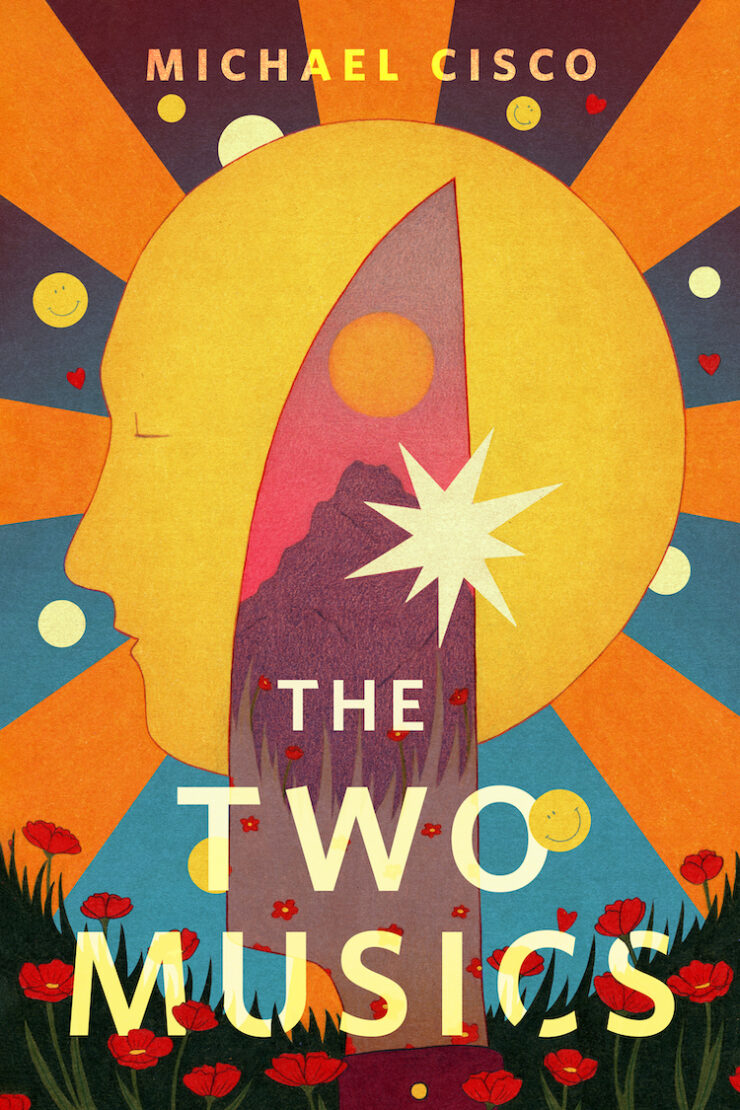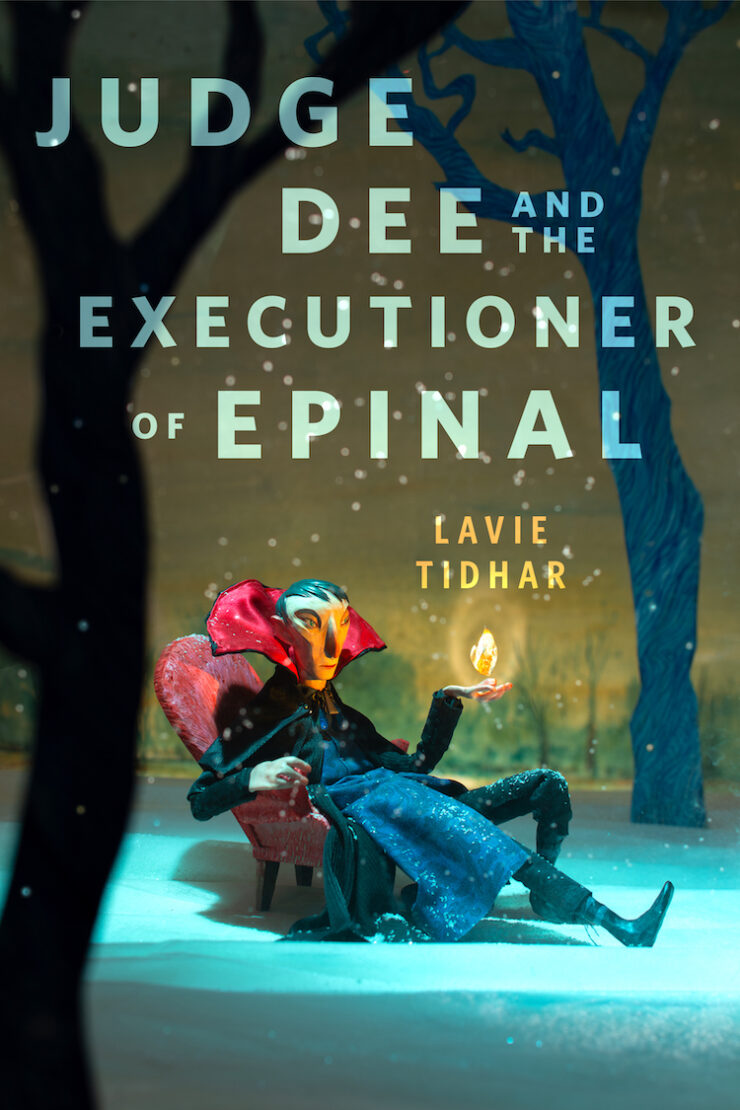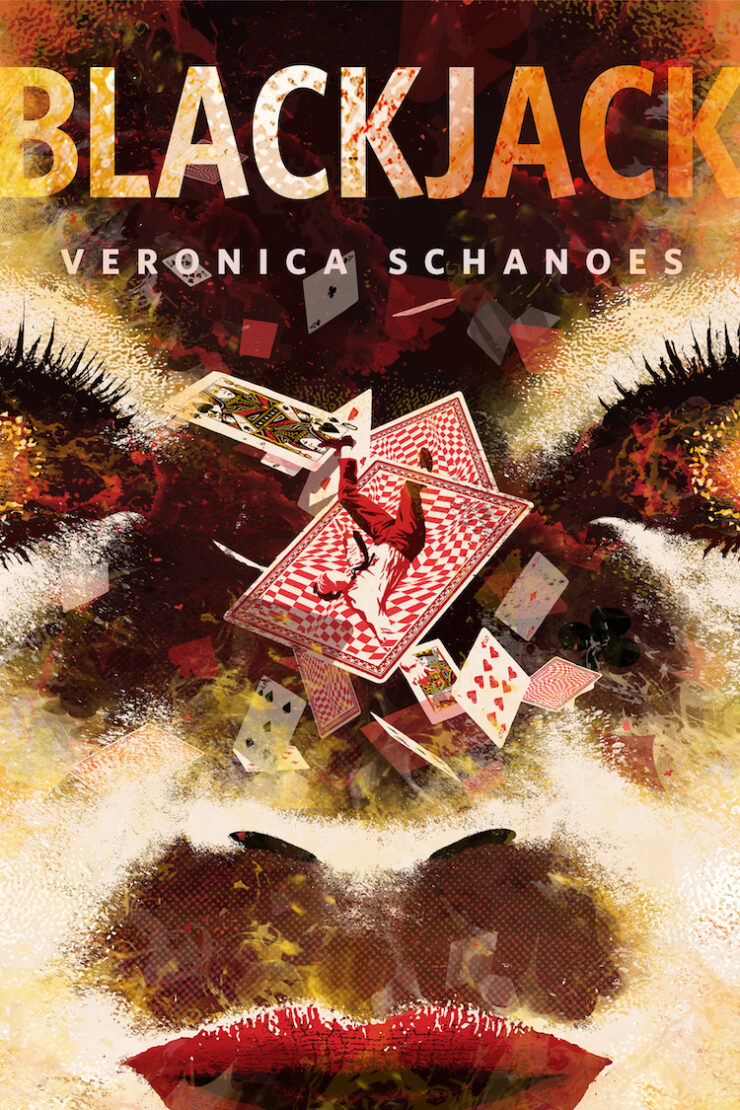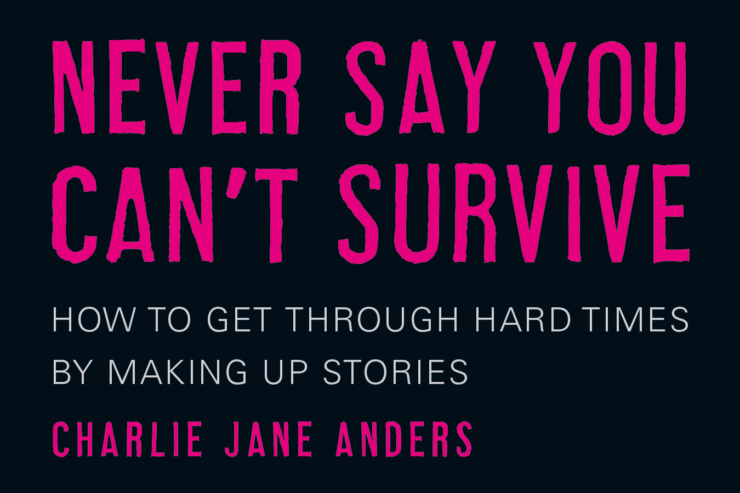Charlie Jane Anders is writing a nonfiction book—and Tor.com is publishing it as she does so. Never Say You Can’t Survive is a how-to book about the storytelling craft, but it’s also full of memoir, personal anecdote, and insight about how to flourish in the present emergency.
Below is the nineteenth chapter, “ Weirdness Gives Me the Strength To Keep Going.” You can find all previous chapters here. New chapters will appear every Tuesday. Enjoy!
Section IV
What We Write About When We Write About Spaceships
Chapter 4
Weirdness Gives Me the Strength To Keep Going
The way I think about weirdness has changed completely of late. I used to think of strange and surreal art as a siege weapon—a cannon aimed at the walls of conformity and structural oppression and well-of-course-ness.
But lately? I think of strange art as a source of reassurance and safety. A cozy blanket made out of nice fuzzy WTF.
Let me back up slightly. Tons of my favorite creators—from Philip K. Dick to Christopher Durang to Kathy Acker to George Clinton—have one thing in common: their work is gleefully, obnoxiously off-kilter. I grew up on The Phantom Tollbooth, Monty Python, Krazy Kat, From The Mixed-Up Files of Mrs. Basil E. Frankweiler, Little Nemo, and classic slapstick comedies and monster movies, so I never had the slightest doubt that bizarre is beautiful.
One huge reason why I wanted to become a writer was to see how far I could go. I had a near-limitless supply of gonzo story ideas, and I wanted to throw the absurdity of our world in everyone’s face. I took it for granted that surreal art and fiction are closely linked to satire, and that over-the-top exaggeration was the best way of getting at the truth behind our flawed perceptions. In other words, surrealism is realer than “realism.” As I said before, we’re all experts at ignoring the stuff that’s right in front of our faces.
So my early short fiction was full of exploding cactus codpieces, sewer monsters that control the advertising industry, a wig haunted by the ghost of a drag queen, and genderqueer okra. I crammed as much incongruity into every page as 12-point Courier New would allow, firing volleys of pure unreality into a world that was suffering under the delusion that it made sense.
Carol Emshwiller wrote that the motive for most of her fiction was “estranging the everyday,” and I feel that so deeply.
As a young writer, I drew courage from the ferocity of Bruce Sterling’s landmark essay on slipstream, which called for writing that defied both genre categories and realism. I prowled through used bookstores looking for every book on the essay’s “recommended reading” list, and got about as far as the letter C. I barely remember Madison Smartt Bell’s Waiting for the End of the World (except that a kitten dies in an unforgivably cruel fashion), but John Barth’s Giles Goat-Boy became an indelible favorite. And meanwhile, Katherine Dunn’s Geek Love was published a smidge too late to appear on Sterling’s list, but it became a wellspring that I keep going back to.
Especially after I moved to San Francisco and transitioned, I found a community of people who were being outrageous in real life, and it made me want to go even further in my writing. I became part of a whole scene of dada performance artists, zinesters, pranksters, queer rebels, and wild poets. I created a site called GodHatesFigs to satirize the notorious hate site GodHatesFags, and helped to organize events like the Ballerina Pie Fight.
Buy the Book
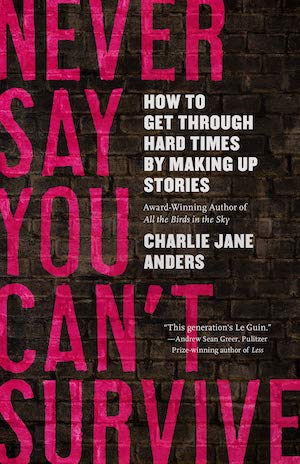

Never Say You Can’t Survive
When did I grow up and tone down the strangeness in my fiction? I didn’t.
My stories are still full of cat butter and talking animals—but I think I got a bit better at suspension of disbelief, so you’re (hopefully) lured into believing that these utterly wack events are really happening to someone. And I never stopped feeling as if madcap silliness could be a wake-up call for people who are snoozing through a million-alarm fire.
Except that when things get really bad—like, everything is broken to the point where the entire world is made out of bloody shards—then a couple of things happen:
1) The absurdity and illogic of our institutions become painfully apparent, and nearly satire-proof. We hardly need a story about the Queen of Hearts shouting “off with her head!” and explaining that words mean whatever she wants them to mean when our actual leaders say similar things in public, every day.
2) I start to find immense comfort in any reminder that the world is intrinsically a bonkers place. A place where pretty much anything can happen, including joyfully outlandish acts of resistance and liberation. I’ve talked a lot in these essays about how the first thing the oppressors want to do is constrain your sense of what’s possible—and a truly odd piece of art can loosen the stays on your corset, allowing you to breathe freely.
So even though I have not deviated from the path of goofballery, I have started to think of its purpose in different terms: as a form of consolation to myself, and possibly others, when everyone is near-inconsolable.
How to use the unreal to heal yourself
The whole concept of “normal” is oppressive horseshit. It’s painful to have to pretend that the world makes sense, especially when double-speak has become mainstream discourse. Orwell would plotz if he had somehow lived to see a world where “free speech” has come to mean “I want to silence my critics.”
So how do you use nonsense to protect yourself from nonsense?
Recognize that “strange” doesn’t have to mean “ugly.” A saving grace in recent years has been the renaissance (in the West) of cute weirdness—in cartoons like Adventure Time, comics like Squirrel Girl, and movies like Guardians of the Galaxy. Baby Yoda is adorably odd, and I’d argue so are Deadpool and Harley Quinn. Maybe “grimdark” has given way, slightly, to “sweetweird.”
You might find it easier to take solace in the weird if you think of it as cuddly, or kind. Especially when “normal” means “hateful.” Maybe try writing about cute robots, or baby dragons, or fuzzy monsters, who make up for their illogic with an abundance of gentleness, or niceness.
But “ugly” is cool, too. So is gross. And nasty. Body-horror can be a place to put all your darkest fears about loss of bodily autonomy, or a way to think about your relationship to your own idiosyncratic body. There’s something incredibly freeing about letting all the shit hit the fan—literally—and imagining what comes next. Like I’ve mentioned before, putting your darkest fears and fantasies into a story can help you to master them.
But also, chaos can be a balm to anyone who feels powerless. When you’re not in control over vital aspects of your own life, it can be reassuring to imagine—or remember—that nobody else has a handle on it, either. There’s a reason why post-apocalyptic stories are one of the most common forms of escapism.
Figure out what sort of peculiar is comforting to you. Like, what kinds of stories do you groove to? Write some fanfic. Write a lot of fanfic. Write some sketches, or vignettes, or just try to come up with an image that feels wonderfully offbeat.
Also, a lot might depend on what you’re seeking comfort from. Too much pressure? Try telling stories about irresponsible randomness. Scary danger and chaos? Maybe lean into the cartoon-logic that allows people to skateboard across the Grand Canyon without a scratch. And if it’s the double-speak thing, then pure gibberish can be an inoculation.
Satire is cool. I know I said a truly horrendous situation is nearly satire-proof, but it’s always possible to go so far over the top that you can look down on the uber-jerks, and maybe drop some anomaly bombs on them.
Find the logic in logorrhea. Nonsense has a way of redshifting into sense, if you keep going far and fast enough. Especially when there are recognizable human beings in the middle of it, which we’ll talk about in a moment. Spend enough time spinning out non sequiturs, and eventually you’ll find yourself making connections and associations between them, because that’s just how brains work. We find patterns in anything, and all that loopitude suddenly makes a higher kind of sense. It’s like a game, sort of.
That’s maybe the most reassuring thing about narrative fecklessness, especially when the world is a mess: there’s meaning in everything, even the apparently meaningless. And the clues are there, if you look carefully at whatever you’ve thrown down. You throw all your cards up in the air, and they’ll land in some kind of order. Every time.
Things don’t have to make sense to be safe, but it’s nice to know that there’s sense to be made, if you just look long and hard enough.
How to suspend disbelief in a truly odd story
I’ve been teaching a workshop for the past few years called “Creating Believable Characters in Unbelievable Situations.” And the gist of it is that the more outrageous the events of a story are, the more grounded and understandable the characters might need to be—with a ton of caveats, like there are times when a cartoon character can exist in a cartoon world, natch.
Simply put, if the reader believes in the characters, and the characters believe in the world, then the reader will believe in the world, no matter how clownpants that world might be.
So in a really off-the-wall tale, I try to give the main character(s) some grounded details, like a pet peeve or a favorite type of music. Plus a fleshed-out backstory, and an internal monologue that shows us what they’re obsessing about—bonus points if their personal obsessions aren’t just about whatever’s happening at the time. (Think Arthur Dent constantly trying to find a decent cup of tea.)
Their goals and desires shouldn’t just be whatever the plot demands in the moment. And they should absolutely feel the trauma and wear and tear of everything they go through. Doesn’t hurt if they’re a bit contrary, or even obnoxious, in the face of all this madcapitation, rather than just trudging meekly through the weirderness. (Look at me, coining words!) Strong relationships are a plus, and so is a clear sense of where these people stand in relation to their world, such as their social status, and what they believe their place is in all this.
If the characters feel like people you could meet on a subway, you’re at least halfway to suspension of disbelief. (Then you just need shock absorbers of disbelief, and maybe brake pads of disbelief.)
But also, weirdness is a function of expectations, which in turn are a function of genre. Aliens showing up and eating everything in sight might be a jarring event in a work of mimetic “realism,” but nobody will bat an eye if aliens turn up in a science fiction story. Just the same way a toga at a toga party has a different meaning than a toga at a serious business meeting. Context also matters, which is why the makers of Doctor Who decided in the early 1970s that a yeti sitting on the toilet in Tooting Bec was more alarming than a yeti wandering the tundra.
So believable weirdness is, in part, a matter of setting and managing the reader’s expectations, and recognizing the preconceptions the reader will bring to your chosen genre (or genre mash-up.) If you really want to startle people, you need to set the table—and then yank the tablecloth off. Which means that there might need to be clear rules, or a sense of status quo, before the mayhem kicks off.
And that brings us back to the characters—we need to understand what the characters think the rules are, and how those rules are being violated by all this chicanery. Again, I’m here for cartoon characters in a cartoon world, but the most potent strangeness is strange to the characters as well as the reader.
Final thought: It’s important to remember that weirdness can be both offensive and defensive. A Molotov cocktail and a soothing elixir, at the same time. To utterly misquote Hunter S. Thompson, when the going gets weird, the weird become paladins.
Charlie Jane Anders’ latest novel is The City in the Middle of the Night, which won the Locus Award for best science fiction novel. She’s also the author of All the Birds in the Sky, which won the Nebula, Crawford and Locus awards, and Choir Boy, which won a Lambda Literary Award. Plus a novella called Rock Manning Goes For Broke and a short story collection called Six Months, Three Days, Five Others. Her short fiction has appeared in Tor.com, Boston Review, Tin House, Conjunctions, The Magazine of Fantasy and Science Fiction, Wired magazine, Slate, Asimov’s Science Fiction, Lightspeed, ZYZZYVA, Catamaran Literary Review, McSweeney’s Internet Tendency and tons of anthologies. Her short fiction has won Hugo, Theodore Sturgeon, and Locus awards. Charlie Jane also organizes the monthly Writers With Drinks reading series, and co-hosts the podcast Our Opinions Are Correct with Annalee Newitz. She is writing a Young Adult space fantasy trilogy, to debut in early 2021.


